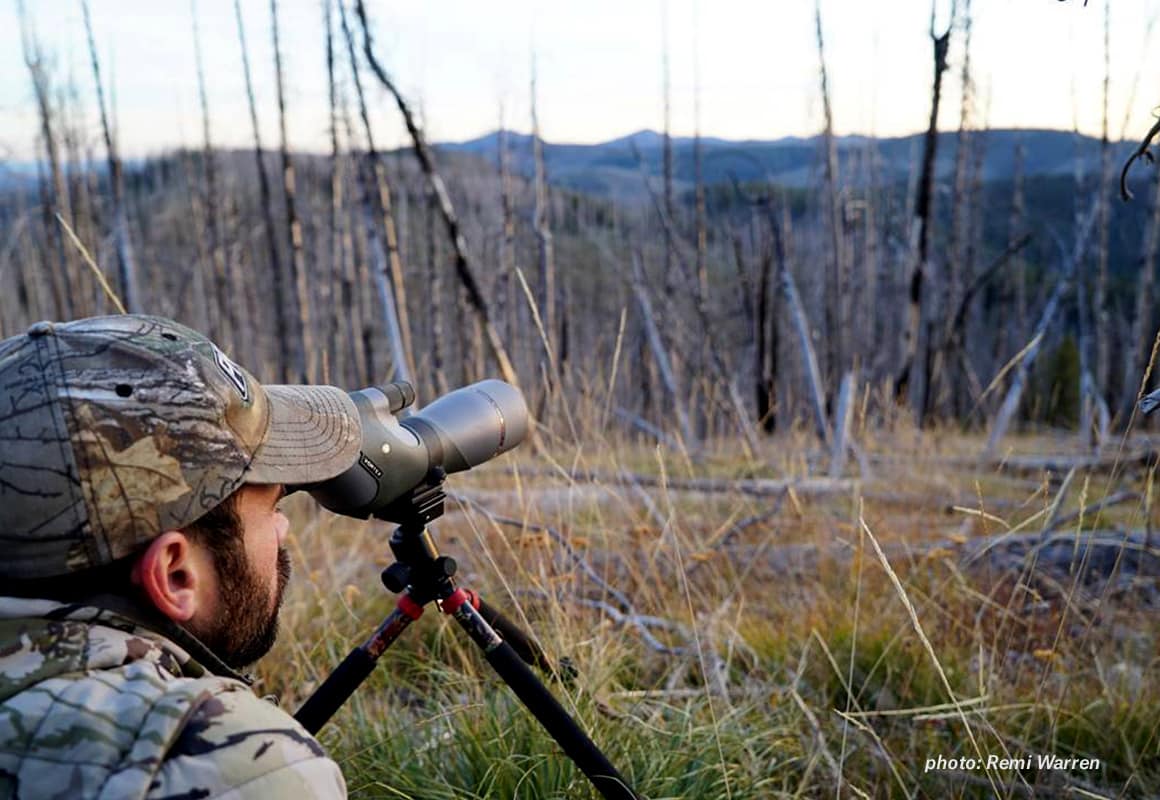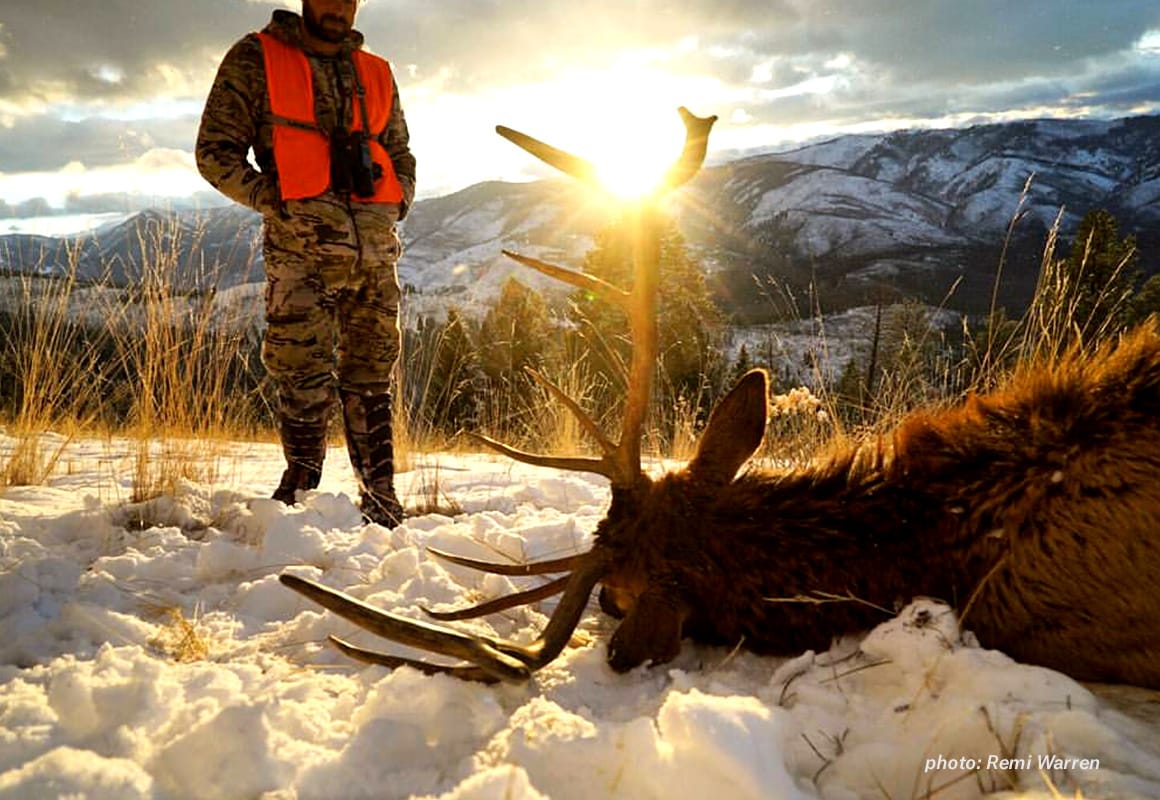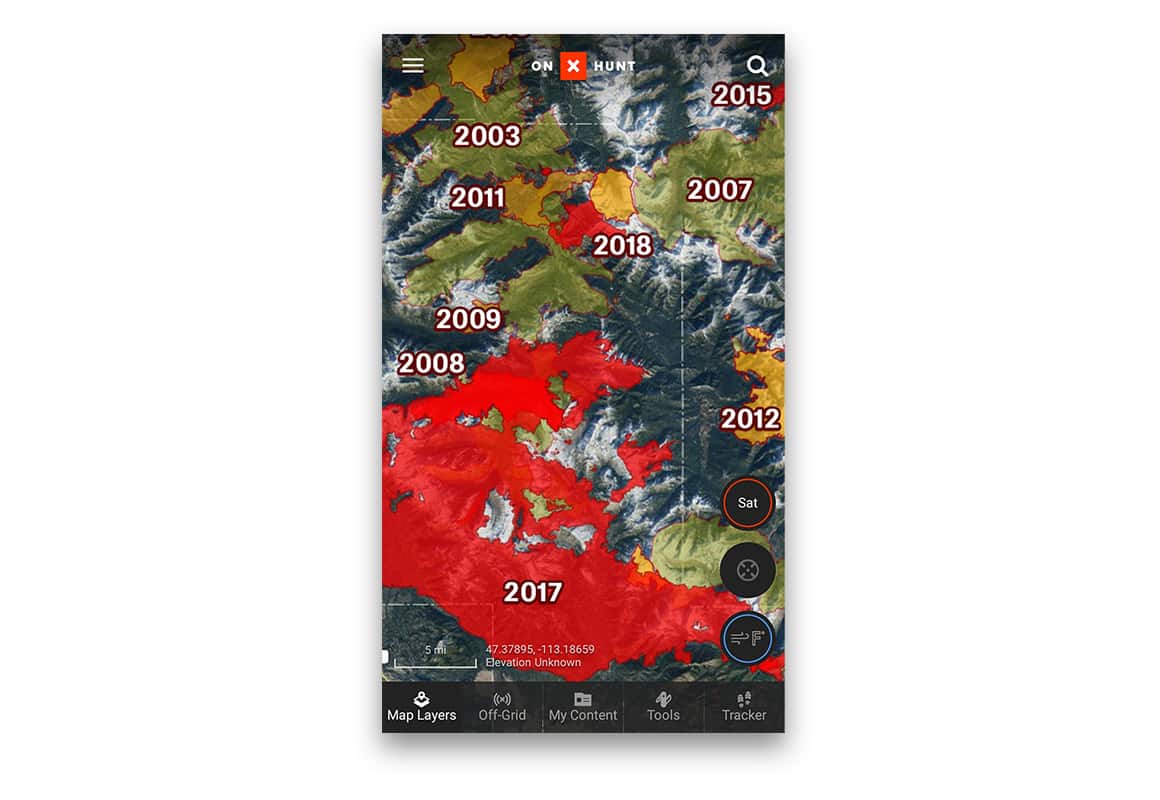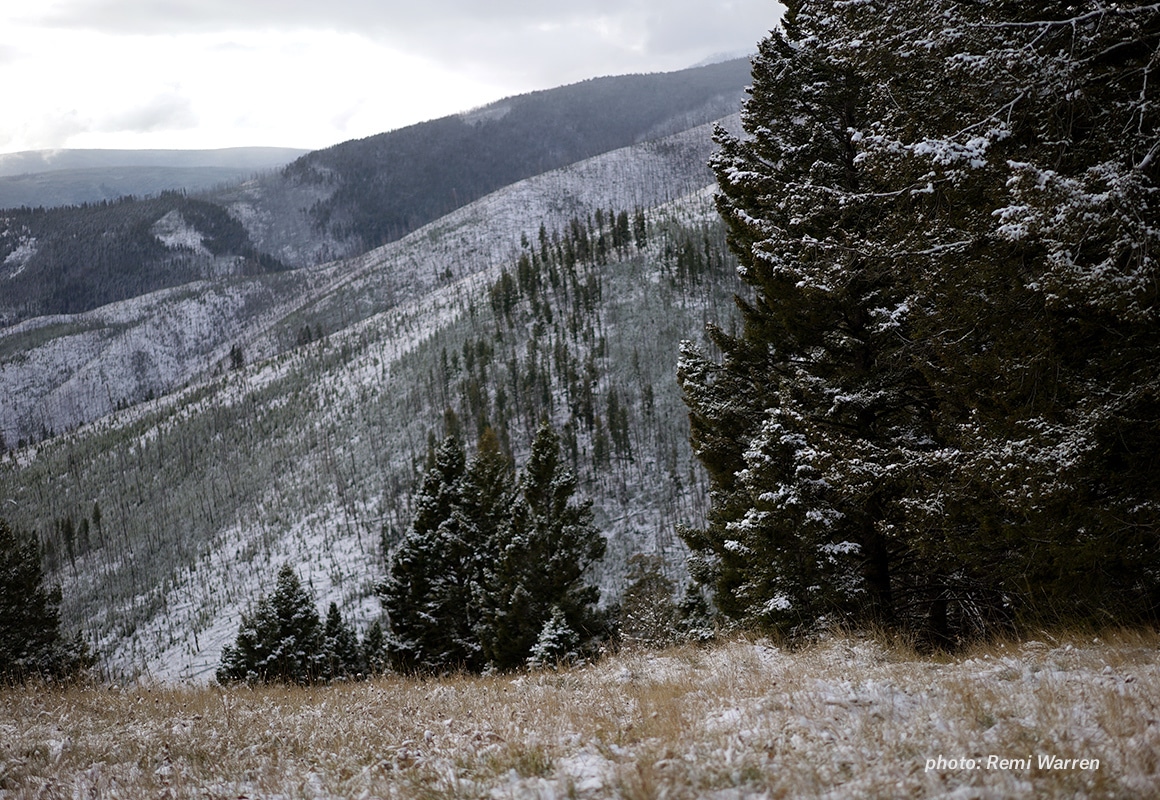Bring the heat to your scouting with these expert tips from seasoned hunter Remi Warren.
Across the West fires are an annual occurrence. Over the last 10 years, the trend has been that more acres are being consumed than in the past. Millions and millions of acres, much of it public land, are barbequed every year.
The good news is that wildfires can create excellent habitat for elk, bolster the area’s population, and increase the animals’ overall health. This, in turn, leads to better horn growth and more bulls in the herd, and with the onX Hunt App, you can successfully navigate this new landscape.

Elk and Fires
The interspersed spots of burned and unburned land create what biologists call an “edge effect.” Fires can increase the abundance of elk forage species after a fire that has positive lasting effects for 10 years or more, depending on the type of cover that was in the burned area. Studies have shown that fires in heavily timbered forests on average increase the elk population in that area by over 70%.
Fires can have positive effects on the elk herd. A calf’s survival to maturity is significantly tied to their relative birth weight—and with more available food for the mothers due to new forage caused by fires, calves are set up to live longer. In captivity, it has been proven that healthy cows have a higher likelihood of producing male offspring. Cow elk also first breed based on their body weight, with half the cows coming into estrus at 70% of their mature body weight. This means that healthy populations with plenty of forage may start breeding sooner, a positive impact that can be felt in a fairly short amount of time. Noticeable positive effects from fires are seen within two to five years, hitting the maximum benefit around seven or eight years.

Selecting a Burned Area
Not all burns are equal; there is a science to picking the best area to maximize the potential benefits of a fire. To do this I look at how the fire burned, how long ago the fire burned, and what type of range was burned. Luckily all this E-scouting can be done easily on your onX Hunt App.
When the Fire Took Place: Both the timeframe in which the fire took place and the stage of regrowth make a huge difference when picking an area to hunt. Just because a fire was recent does not mean that it should be passed over. If you see new growth, resident elk will begin using it that very year. Studies have shown that elk will still remain on the home range in areas where fires have burned up to 70% of the area.
Most burn areas reach their maximum benefit around seven years after a fire. I generally start targeting burns four to six years after the initial fire, giving the area enough time to start growing the population, increase the number of bulls, and provide good feed to bulls that will now be reaching maturity.
Using the onX Historic Fire Map Data: In the Map Layers section of the app, scroll down to Trees, Crops, and Soil. In the menu, you will find the Historic Wildfires Layer. This will give you an overlay of the area the fire covered as well as the year. This is a great starting place to narrow down the most productive regions within the area you plan to hunt.
The onX Historic Fire Layer is also a great place to start when seeking an area to apply for or a new unit to hunt on a general tag. I will often start by scrolling through the state I want to hunt and looking for both recent burns in areas that are already good, or looking for burns from four to six years ago in areas that I think should be now coming on strong.
In 2014 and 2015, there were a large number of smaller fires covering areas across Idaho, Montana, New Mexico, Nevada, Oregon, and Utah that are now in their most productive years for elk. Now is the time to capitalize on some of these burns.

How the Fire Burned: The best elk habitat is a patchy burn where at least 20% of the area remains unburned within the fire perimeter. Look for fires that have a mosaic pattern of areas of completely scorched earth blended with partially burned and live timber. As edge animals, elk seldom travel more than 1200 yards from suitable cover. These patchy areas are where I focus the majority of my attention.
- In the App: Once I locate a fire I am interested in, I switch to the onX Satellite Basemap and look to highlight these mosaic areas—the areas where I can visually see fire mixed in with live healthy forest or older growth. Once I find them, I will use the “Add Waypoint” feature under the Tools tab to highlight and make notes of the area as a place to consider or check out.
Type of Range That Was Burned: For overall burn use, it is better to find an area that has had a fire on a winter range than a summer range. Studies show elk use burns more frequently in the winter than in the summer because food is important in the winter months. Patchy fires in the winter range can help elk remain healthier even if it is a hard winter.
Use the onX elk hunting app to locate burns on south-facing slopes. I will use the Hybrid Basemap (topo and satellite) to help identify the best winter range. Orientation of the slope is important due to the burn-off from the sun; the south slopes will regain the vegetation and graze. Areas that may have previously been timbered may now provide food for elk herds in the winter on these south slopes, making them great burns to target from mid-October through the end of November.
By targeting burns and using the many layers available in the onX Hunt App, you can effectively scout and plan your elk hunt better than ever before. Learning to target these highly productive burns will increase your elk hunting success and put you in a great spot to start your next elk hunt.

6 Things to Remember When Hunting a Burn Area
- Don’t overlook patches of standing burned timber: It may not look like a great hiding spot, but dense standing burns can make elk feel secure and like they are hiding when they are actually easy to see if you take time to glass. Remember that even some areas that look fairly open can easily conceal elk—take your time to look these spots over. They can be a “gimme” and are the benefit of hunting in burns.
- When calling in elk, be in front of the burned tree: If you feel like you are out in the open in a burn, it is because you are. Don’t let that get the best of you. If a bull is coming into bow range as you call, you are better off being in front of a tree and using it to block your outline than behind a burnt tree from which you have to lean out. The open nature of a burn means your movement is more likely to get spotted, so you are better off in front of a solid backdrop.
- Now is always a good time to hunt a burn: If a portion of an area you are hunting or regularly hunt burns this summer, don’t count it out. The new growth will become a magnet for elk in the surrounding areas. Although the area may not reap the benefit of boosting the population in that time, the burn will attract many of the current elk and concentrate a portion of them in an area that may be easier to glass than other places. Every year I check the onX Current Wildfire Layer during fire season in the areas I frequently hunt. There are often small fires that I may not realize happened or some nearby in a place I don’t hunt as much. I will mark these areas and check them during the season. More times than not this has been a huge factor in my success.
- Glass into the pockets of live timber: The majority of elk using a burn will spend their lives escaping danger in the pockets of canopy cover that remain. Find a spot where you can get across from this cover and glass into it. You may only be able to see bits and pieces, but you will likely catch elk moving in it. Watching multiple patches from afar allows you to catch elk when they first move out into the burn to feed in the evenings.
- Think about the habitat in terms of what it was like before the fire: Elk will often use the same place they have always used, burnt or not. If there is a place you regularly got into elk before a burn and the spot is now open, elk will still be ingrained to use this portion of their home range. Burns also allow you to see the topography of areas in a new way. Look at the areas they like, notice what makes it unique, then find other spots that look similar.
- Watch for falling trees: Burns can be dangerous, especially five to ten years after the initial fire. Standing dead trees will rot and are prone to falling in wind—often surprisingly quietly, considering their size. Make note of areas where there are a lot of downed trees and avoid these areas during high winds. If I am crossing through a large area of blow-downs, I try to look at the direction most of the trees have fallen and walk on the opposite side of trees I know could kill me (two close calls really drove this point home).
Read more from hunter, writer, adventurer, and conservationist Remi Warren at RemiWarren.com.